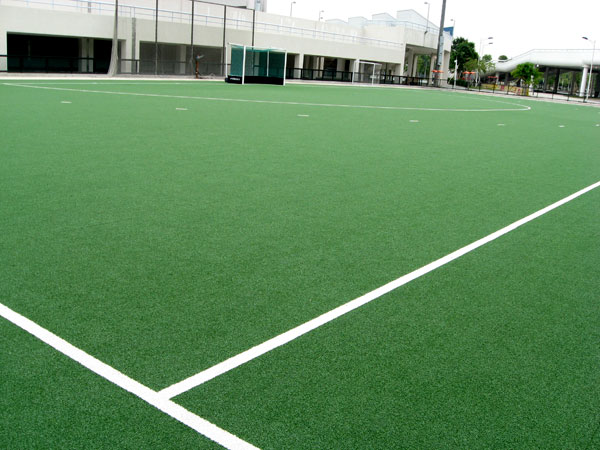A great deal of football and rugby pitches are likely to be pretty quick to become a muddy, grubby mess, which in turn effects the standard of play. 3rd generation and 4G soccer and rugby pitches have to have a pro-active approach to routine maintenance. Procedures including drag brushing, power brushing, infill top ups, de-compaction, and deep-cleansing, enhance the longevity of the pitch, and keep the physical appearance of the pitch in good shape. The industry guidelines for maintenance are that per 10 hours of gameplay, 1 hour of pitch upkeep is highly recommended. It’s always key to find a maintenance provider that is certified, like
Drag Brushing
Drag brushing is required to spread out the infill round the facility and so it really should be executed 2 times weekly. It skilfully disperses the infill and raises the carpet pile. It also helps to stop the fibres getting dirtied with dust particles, grime, and dirt, that may become deep-rooted within the fibres. Recurrent drag-brushing will improve the overall resilience and life expectancy of the pitch.
Power Brushing
Keeping the turf erect as well as the infill level accurate is often a requirement for Third generation and 4G pitches. Routine power brushing really helps to support the decompaction and embed the sand directly into the turf fibres, which cuts down debris build-up throughout the fibres. It may also help to disperse and sustain the infill, and ensure that the carpet pile is raised and opened up. On the whole, power brushing guarantees the greatest performance out of your pitch by enabling the fundamentals of football and rugby play, for instance such as grip, and reducing the amount of player accidents. Also, brushing can boost the longevity associated with the pitch. Power brushing must be implemented weekly.
This website www.artificialgrassmaintenance.co.uk provides extensive more information on the main topics 4g football maintenance.
De-compaction
De-compaction frees up the rubber infill, which specifically helps water drainage and controls the feel of the grass. Moreover, it elevates the carpet fibres, and can aid the eradication of contamination. This protects the carpet fibres from abrasion and enhances playing components like stud glide, shock reduction, and ball roll and bounce. De-compaction services ought to be carried out on a monthly basis.
Infill Top Ups
There are numerous visible and physical benefits to infill top ups. The rubber pieces that are distributed all over the pitch strengthen the fibres and assist in managing to keep them vertical. In spite of this, after some time, the non-reinforced fibres above the infill sagg underneath the participants feet, plus a portion of infill will ultimately disappear from the pitch. Displacement of the infill can lessen the life expectancy of the pitch, tire the carpet fibres, and increase the rate that it weakens. The displacement results in the pitch exhibiting signs of wear, and therefore the rubber infill will have to be replenished. Infill top ups entail the infill being loosened and cleaned. The rubber levels are adjusted and evenly redistributed, and also the carpet fibres are put up-right to guarantee a great pitch for football and rugby gameplay. The top ups offer an enhanced level of play and improves playing characteristics. At the very least, infill top ups must occur every 1-2 years.
Deep-Cleaning
A more intensive cleaning is needed to get rid of dirt, dust, debris, and fragmented carpet fibres from deep within the carpet pile. At the least, deep cleansing needs to be carried out every few years.
